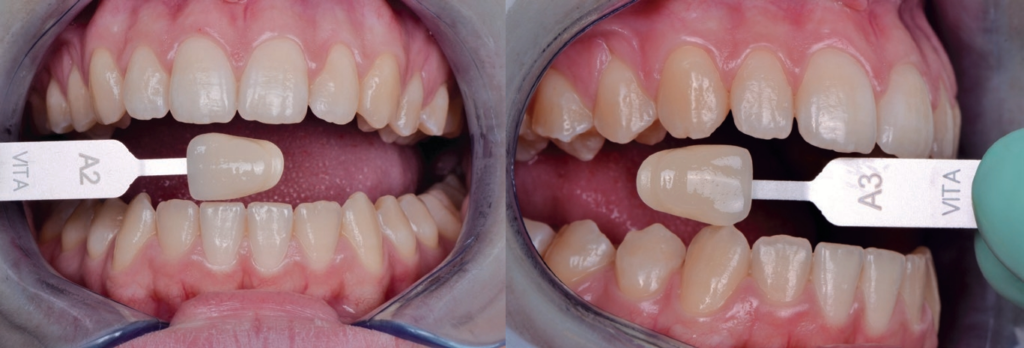Home Whitening, from A2 to B1 in 4 Weeks

In the October 2024 edition of Maxillaris magazine, a clinical case was presented highlighting the advancements and benefits of at-home dental whitening using Kiyomi products.
This case involved an 18-year-old patient who sought consultation for aesthetic improvement, as she perceived her teeth to be “very yellow.” After a detailed evaluation, the dental team at Clínica Dental Santiago Poc opted for an at-home whitening treatment using Kiyomi’s K-Bleach 16% Home product, achieving notable results within a four-week period.
Evaluation and Treatment Planning
According to the VITA® shade guide, the patient had an A2 shade on her anterior teeth and an A3 shade on her canines and posterior teeth. After a careful review of her habits, it was concluded that she was a non-smoker and did not consume foods that stain teeth, which made her a favorable candidate for the treatment. Additionally, the presence of previous restorations was confirmed, and the patient was informed that these would not change color after the whitening treatment, possibly requiring replacement afterward to match the new dental shade.

Whitening Protocol
The whitening treatment was carried out using Kiyomi’s K-Bleach 16% Home, a 16% carbamide peroxide gel. The process was divided into two phases: during the first week, the agent was applied only to the canines to equalize their shade with the anterior teeth. In the following three weeks, the whitening was extended to the entire dentition. Throughout this period, weekly check-ups with photographs were conducted to evaluate progress and monitor any potential sensitivity.
Four weeks after starting the treatment, a significant improvement was observed. The tooth color became uniform and reached a shade lighter than B1, one of the lightest shades on the VITA® guide. The patient was very satisfied with the results and reported no significant discomfort during the process.
Discussion and Conclusions
At-home dental whitening, although a more prolonged treatment compared to in-office procedures, offers greater safety for the patient, as the concentration of the whitening agent is lower (in this case, 16% carbamide peroxide compared to the 40% typically used in-office). Additionally, this approach allows for weekly progress checks and minimizes the risks of hypersensitivity and other complications, such as external cervical resorption.
The clinical case presented in Maxillaris demonstrates how the use of high-quality products, such as those from Kiyomi, can achieve predictable and satisfactory results in dental whitening treatments. The K-Bleach 16% Home, combined with digital technology for the fabrication of custom trays, enabled a successful whitening treatment in a controlled and comfortable environment for the patient. This experience reinforces the preference for at-home whitening in many cases due to its safety and long-term effectiveness.

